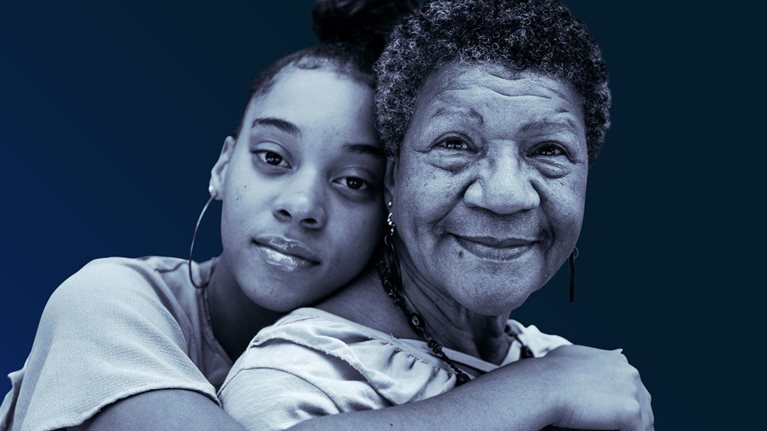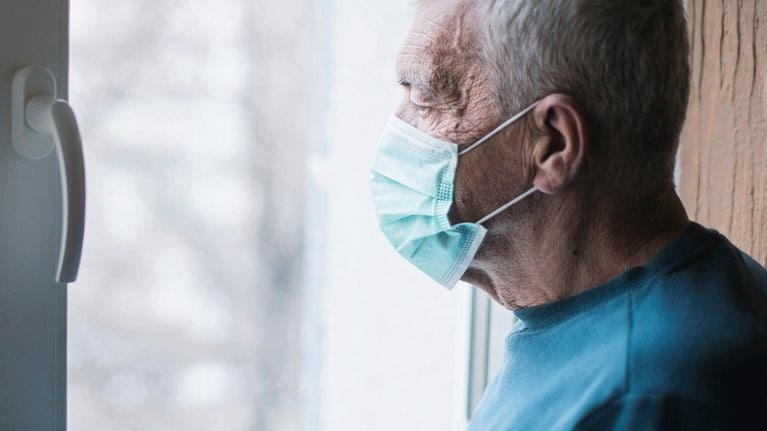The COVID-19 outbreak is a human tragedy that affects not only the global economy but also the global psyche. In a recent publication, “Returning to resilience: The impact of COVID-19 on mental health and substance use,” we highlighted the potential behavioral health impact of the economic and emotional distress caused by the COVID-19 pandemic. Now, we offer a deeper dive into four actions healthcare leaders can take to address behavioral health surrounding the COVID-19 pandemic:
- Strengthen community prevention
- Leverage data, analytics, and technology
- Integrate behavioral and physical health services
- Partner to address unmet health-related basic needs1
Behavioral health conditions, consisting of mental and substance use disorders, have societal, economic, and healthcare system implications, all of which are amplified by the COVID-19 pandemic. Before the outbreak, one in two Americans faced a mental or substance use disorder at some point in their lives,2 with depression as the leading cause of disability worldwide.3 Surveys show that 23 percent of people in the workplace have depression; these workers miss twice as much work, and have five times as much “lost productive time.”4 In the healthcare system, individuals with behavioral health conditions have a medical spend that is two to four times higher than the rest of the population.5 This disproportionate spend is driven largely by increased medical costs for comorbid chronic physical conditions.
Furthermore, a gap in treatment capacity to meet these needs exists: 56 percent of counties in the United States are without a psychiatrist,6 64 percent of counties have a shortage of mental health providers,7 and 70 percent of counties lack a child psychiatrist.8 COVID-19 and the ensuing economic crisis may drive an increase in mental and substance use disorders, as stress contributes to higher rates of post-traumatic stress disorder, depression, anxiety, and alcohol or drug use,9 along with further shortages in services available as practitioners face economic challenges.10
Healthcare leaders already face the challenge of meaningfully improving behavioral health, which may be exacerbated by COVID-19.
Behavioral health context and national momentum
Relevance
Providing prevention, treatment, and recovery support services in behavioral health are critical to improving patient outcomes, reducing costs for providers, preventing criminal justice involvement, promoting school achievement, supporting employment, and enhancing social connectedness.11 However, the healthcare system struggles to ensure adequate care for people with mental and substance use disorders. In addition, inequities continue, with racial and ethnic minorities having less access to behavioral health services and being less likely to receive needed high-quality care.12
Individuals with behavioral health conditions have two to six times higher frequency of co-occurring chronic physical conditions than individuals without behavioral health conditions (Exhibit 1). While people with behavioral health conditions comprise 23 percent of the insured population, they drive 60 percent of the total cost of care.13 Moreover, in the post-COVID-19 period, traumatic stress, unemployment, and social isolation will lead to exacerbation of existing behavioral health conditions and onset of new conditions that could drive $100 billion to $140 billion of additional spending on behavioral and physical health services in 2020 and 2021.14

Policy shifts
The COVID-19 pandemic may add impetus to an already growing trend around behavioral health as a policy priority. The Coronavirus Aid, Relief, and Economic Security Act (CARES Act) provides $425 million for additional community-based behavioral healthcare and suicide prevention, with most funding going to states and community providers.15 However, a recent survey of behavioral health providers serving high-needs or high-risk COVID-19 populations revealed inadequate resources to serve their populations.16
Behavioral health has been a top bipartisan policy issue for more than a decade, starting with the Mental Health Parity and Addiction Equity Act of 2008 (MHPAEA), which requires behavioral health and medical/surgical benefits to be treated equitably by a payer with respect to annual and lifetime dollar limits, financial requirements, and treatment limitations.17 Other examples include the Affordable Care Act of 2010 (ACA), which established behavioral health services as essential benefits, and the SUPPORT Act (2018), which significantly expanded funding to combat the opioid epidemic.1819
While the passage of these laws is evidence of progress, their full potential is yet to be fully realized. For example, while MHPAEA endeavors to bring patient financial requirements (for example, co-pays and deductibles) for behavioral healthcare to parity with physical health services, behavioral health providers are often reimbursed at lower rates than non-behavioral health providers, thereby decreasing participation in insurance networks and increasing members’ out-of-pocket costs.2021 In ACA marketplaces, 11 percent of all mental health providers participated in plan networks compared with 24 percent of primary care providers.22 Furthermore, individuals with commercial insurance are five times more likely to use out-of-network providers for behavioral healthcare than for physical healthcare.23 With cost cited as a major reason people do not access behavioral healthcare, this shift to out-of-network care poses a financial risk to individuals with behavioral health conditions.24
Due to COVID-19, several emergency waivers and authorities were granted to facilitate access to behavioral health services, including increasing reimbursement rates and the number of eligible providers for telehealth services, relaxing Health Insurance Portability and Accountability Act (HIPAA) technology requirements, increasing Federal Medical Assistance Percentage rates, and allowing remote treatment initiation for medication-assisted treatment.25 Permanent changes in data privacy were instituted to promote harmonization across substance use disorder treatment and other parts of healthcare.26 These flexibilities have supported a significant shift in volume of behavioral health services to telehealth and virtual practice. It remains to be seen, however, which flexibilities will endure past the emergency declaration and how, as a whole, these changes will affect the behavioral health landscape.
Actions to improve behavioral healthcare
Building on the current momentum for change, the healthcare system has opportunities to transform behavioral health through four key actions:
Strengthen community prevention
Payers and providers have historically supported physical disease prevention programs, but behavioral health has not had the same support. However, many prevention and early intervention programs for mental and substance use disorders have demonstrated cost effectiveness, with returns on investment as high as $65 per $1 invested. These programs focus on areas such as maternal and infant mental health, school-based mental well-being and substance use education, first-episode psychosis, workplace screening, social isolation prevention, mental health crisis management, and disaster management.27 Workplace programs have shown the highest returns on investment when they focus on improving knowledge of mental health risks and providing personalized programs for employees.28 A suicide and self-harm prevention strategy for construction workers has demonstrated a 5:1 return on investment.29
The successes of these programs suggest that payers, providers, employers, and governmental entities can all positively and cost-effectively influence behavioral health outcomes by engaging individuals and communities, reducing societal stigma, and intervening early to prevent behavioral health conditions.
Prevention is critical to mitigate a significant rise in behavioral health needs as a result of the stress, anxiety, and social isolation triggered by the COVID-19 pandemic and the associated economic decline. Previous natural disasters and economic crises have been followed by documented upticks in rates of post-traumatic stress disorder, depression, anxiety, and substance use disorders.30 For example, after the tragic events following the tsunami in Japan in 2011, 10 percent of the population reported initiating alcohol use.31 A study of residents in Mexico two months after the 2017 earthquake revealed that 36 percent of individuals had symptoms of post-traumatic stress disorder.32
Prevention programs in a physically distanced environment may continue to be a challenge. For example, K-12 systems play an important role in fostering the behavioral health of students, often through informal channels such as lunchtime check-ins with students or phone calls home from teachers and staff. As schools continue physically distancing, institutions will need to ensure these measures continue, albeit in a different form.
As communities move past the peak of the pandemic and toward recovery, healthcare and business leaders can work together to provide crisis counseling, behavioral health screening, and early intervention services. At-risk groups may include frontline healthcare and essential workers, long-term care residents, individuals who were ill or lost a loved one to COVID-19, individuals in extended quarantine, and individuals who lost their jobs. Ongoing vigilance for new symptoms, the development of post-traumatic stress disorder, and an increase in service demands may help focus early intervention resources.

Returning to resilience: The impact of COVID-19 on mental health and substance use
Leverage data, analytics, and technology
Advanced analytics has made it possible to tailor programs to more precise subsets of individuals (Exhibit 2) so that clinical resources can be directed to those most at risk for mental or substance use conditions and unmet basic needs (for example, housing, food). Using dynamic data sets, such as the Vulnerable Populations Dashboard,33 healthcare leaders have tools to identify populations who would benefit from targeted prevention and treatment efforts.

Predictive modeling also can be done at the individual patient level to identify those who would benefit from specific interventions, such as collaborative care or intensive case management (Exhibit 3). Moreover, payers and providers can project demand more effectively by leveraging and improving available data sources and artificial intelligence.

Innovation can enhance care delivery by integrating evidence-based and measurement-based behavioral healthcare within patient self-management applications, digital therapeutics, analytic tools, and electronic health records. As pandemic-related restrictions to in-person care delivery ease, providers will need appropriate referral management resources and protocols to continue meeting acute care needs at a distance. Additionally, privacy concerns have to remain appropriately addressed.
The current context builds upon an existing wave of innovation in behavioral health, with private equity and venture capital companies having invested more than $4.3 billion in behavioral health through June 2020 (Exhibit 4).

Integrate behavioral and physical health services
The clinical community has made major strides in developing evidence-based treatments for behavioral health conditions, but opportunity for improvement remains. These improvements may include at-scale adoption of these practices and improved collaboration with physical health services. Integrating universal screening for behavioral health conditions into primary and specialty healthcare services (including COVID-19 care) can support the shift to whole person care.
In addition to screening, other evidence-based prevention and treatment strategies can support integrated approaches. For example, medication-assisted treatment for opioid use disorder delivers a three-fold reduction in adverse health outcomes, including overdoses and emergency department visits for other complications related to opioid use. However, the National Survey on Drug Use and Health reports that only 25 percent of those with opioid use disorders receive specialty treatment, far lower than for proven treatments for non-behavioral health conditions.34 From a prevention and early intervention perspective, investing in screening, brief intervention, and referral to treatment (SBIRT) can generate healthcare cost savings that range from $3.81 to $5.60 for each $1 spent.35 To support better integration of care, strategies include increasing the behavioral health competency of primary care providers, expanding the use of peer counselors to promote engagement in care, and strengthening the behavioral health workforce.
Partner to address unmet health-related basic needs
Healthcare leaders can partner to integrate behavioral health and human services for greater impact. In a recent nationwide survey, people with poor mental health were two times as likely to report an unmet basic need as those with good mental health, and four times as likely to have three or more unmet basic needs (Exhibit 5). Behavioral health conditions can interfere with work, family, and navigation of daily life. Whole person care approaches can improve outcomes across both healthcare and broader functioning in society.36 For example, data sharing and increased connectivity between providers and community-based organizations have led to improved outcomes for patients with unmet basic needs.37

Several partnership models already exist to integrate delivering direct healthcare and addressing unmet basic needs. Further expansion can enhance their impact. For example, healthcare organizations could consider hiring peer supporters to improve the effectiveness of clinical services,38 extend behavioral health networks to include community-based social service providers,39 integrate behavioral health and basic needs in care management models and offer supported employment and improved return-to-work policies aligned with the Americans with Disabilities Act.40
How to work toward solutions
Healthcare stakeholders can commit to elevating the focus on behavioral health and scaling solutions within their organizations with these tactical solutions. Organizationally, stakeholders can establish behavioral health-specific key performance indicators (KPIs) beyond the behavioral health silo and use these KPIs to evaluate executive performance. For their employees, members, and/or patients, stakeholders can adjust organizational language and policies to combat the pervasive stigma toward those with behavioral health needs, remove barriers to prevention and treatment services, and address mental and substance use disorders with the same urgency as other health conditions. Lastly, they can ensure equitable access to evidence-based behavioral healthcare across populations and geographies, including racial and ethnic minorities.
The behavioral health crisis in the United States has taken a toll on life expectancy, with potentially increased magnitude due to the COVID-19 pandemic.4142 Healthcare leaders have the power and responsibility to adopt or scale existing, science-based solutions. Their actions can create meaningful change to benefit their organizations, improve the healthcare system, and save lives.
For more related insights, visit the Center for Societal Benefit through Healthcare’s webpage.


